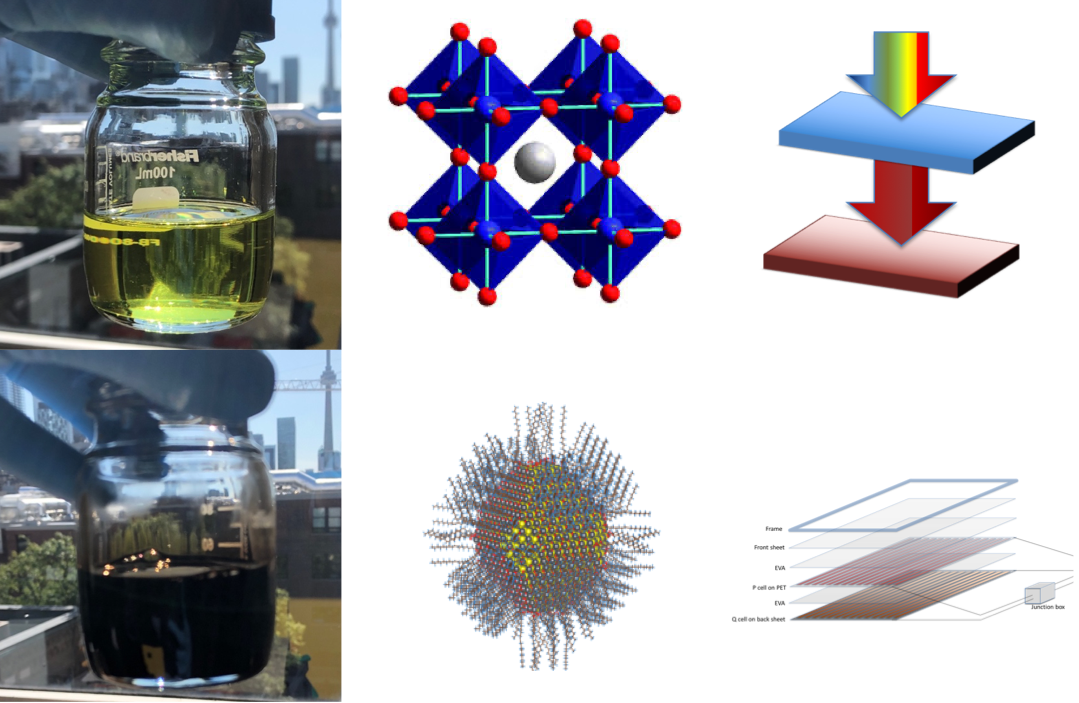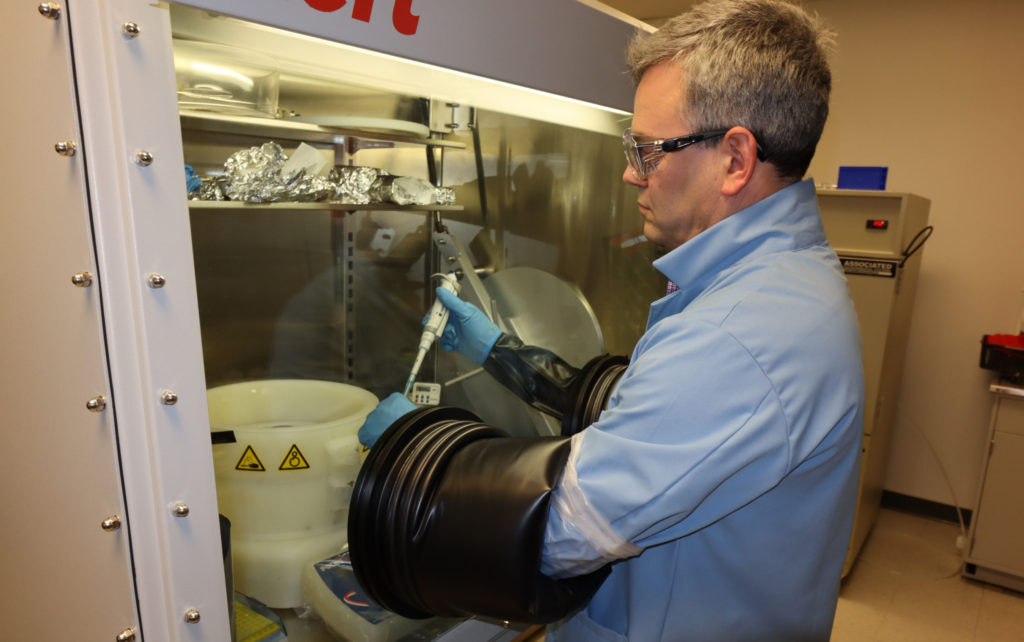

Over the past 30 years, globay energy consumption grew from about 12 petawatt hours per year (PWh/yr) to 28 PWh/yr. In the next 30 years, it will more than double again to 66 PWh/yr. It is expected that approximately 45% of the world’s future electricity demand will come from photovoltaics. QD Solar wants to make this prediction a reality and be part of the solution to the world’s climate crisis.
A major technology breakthrough is needed in order for solar photovoltaics to become the dominant contribution to the global energy mix.

QD Solar is developing new nanomaterial semiconductors in the form of collodial quantum dots and perovskites. We are incorporating these active materials in a tandem cell architecture to efficiently harvest more of the sun’s available radiation in real-world conditions.
We have made breakthroughs in novel highly efficient and complementary photovoltaic nanomaterials based on perovskites and colloidal quantum dots. We have stabilized these materials and incorporated them into a solar tandem cell architecture using large-format manufacturing.

Levelized cost of electricity (LCOE) is the metric used to evaluate the cost of electricity-producing technology. QD Solar’s perovskites and quantum dots produce low LCOE because of the low cost of materials. Our tandem solar cells are produced from solution and fabricated into large-format sheets using roll-to-roll processes. The efficiencies of this manufacturing process are in stark contrast to the expensive batch wafer-based semiconductor manufacturing processes of silicon cells. QD Solar can offer a solar sheet that is low cost, flexible, durable, and lightweight, which can easily be integrated into existing solar panel manufacturing supply chains.
Target Solar Module Market: Rooftop (space-constrained areas) $77.4 billion in 2025 with a compound annual growth rate of 11.2% between 2019 and 2025
Intellectual Property: Nine patent families across nine countries
Over the past ten years, solar panel manufacturers have struggled with extremely low profit margins. They need a technology breakthrough to return to healthy profitability. QD Solar’s technology can provide that breakthrough while changing the economics of both input and assembly costs. Our energy harvesting efficiency will allow panel manufacturers to focus on the rooftop marketplace (space-constrained areas), where energy power density commands a significant price premium. Combined with lower input and assembly costs, this will lead to much higher profit margins in the solar panel industry.

QD Solar has made rapid and steady progress in the development of efficient and stable perovskite and quantum dot solar materials. We have demonstrated efficiencies of 24% on a lab-scale prototype that combines perovskite and quantum dot materials. We are currently undergoing extensive stability tests and will soon be able to demonstrate a stable solar cell with identical dimensions used in traditional solar technologies. We are on schedule to deliver a stable perovskite and quantum dot mini panel minimum viable product with 21% efficiency in early 2022 and a large solar sheet commercial product comparable to the size of regular photovoltaic modules later that year. We plan to reach 23% efficiency in 2023.